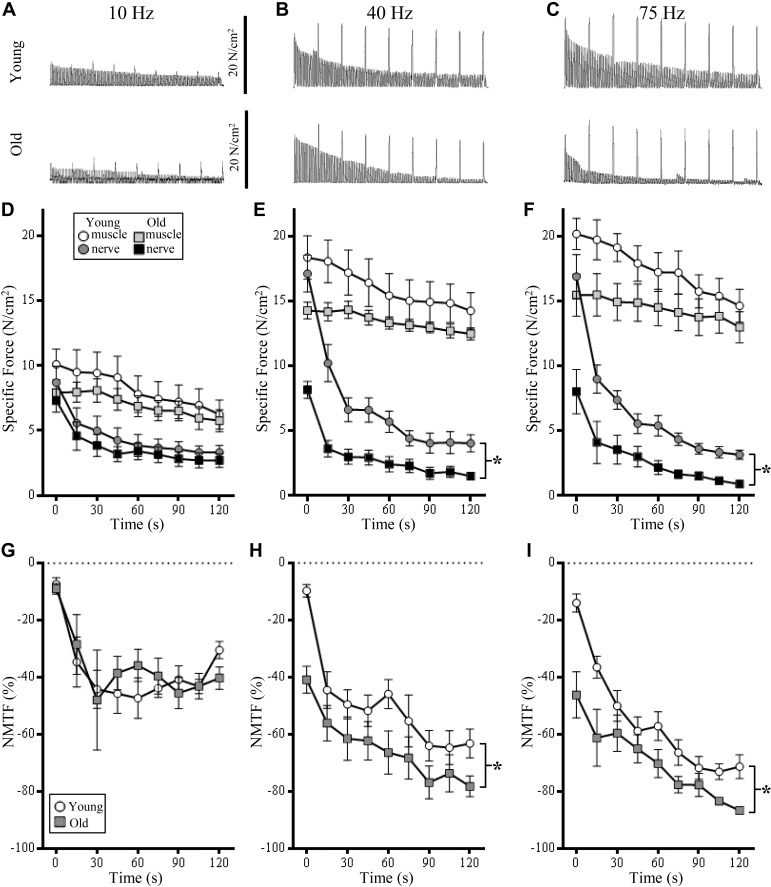Fig. 2.
At 40- and 75-Hz stimulations, age increases the contribution of neuromuscular transmission failure (NMTF) to reduced diaphragm muscle (DIAm) force production. A–C: representative traces of continuous nerve-evoked contractions, superimposed with muscle-evoked contractions (every 15 s) at 10-, 40-, and 75-Hz stimulation frequencies, respectively, in young (top row) and old rats (bottom row). D: time course illustrating no difference in the specific force (means ± SE) generated by 10-Hz muscle stimulation (open circles, young; light gray squares, old) and nerve-evoked contraction between young (dark gray circles) and old rats (closed squares). E: time course illustrating the specific force (means ± SE) generated by 40-Hz muscle stimulation and nerve-evoked contraction between young and old rats. In old rats, the specific force generated during nerve-evoked contractions was significantly reduced compared with young rats (*P < 0.05). F: time course illustrating the specific force (means ± SE) generated by 75-Hz muscle stimulation and nerve-evoked contraction between young and old rats. In old rats, the specific force generated during nerve-evoked contractions was significantly reduced compared with young rats (*P < 0.05). G: time course illustrating no difference in the development of NMTF% (means ± SE) between young (open circles) and old rats (gray squares) at 10-Hz stimulations. H: time course illustrating increased development of NMTF% (means ± SE) in old compared with young rats at 40-Hz stimulations. I: time course illustrating increased development of NMTF% (means ± SE) in old compared with young rats at 75-Hz stimulations. Across all stimulation experiments, reduction of both muscle and nerve-evoked DIAm force occurs across the duration of this experiment (i.e., fatigue). *P < 0.05, two-way ANOVA with Bonferroni post hoc analysis; n = 7–8 rats per age.

